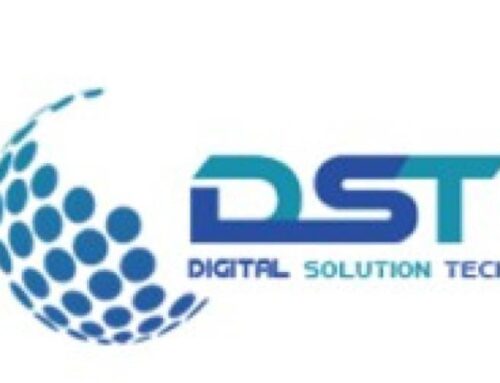In today’s competitive business landscape, marketing heads are tasked with more than just promoting products. They must craft data-driven strategies that align with company goals, engage customers, and generate measurable results. With the rise of digital marketing channels, the role of a marketing head has evolved to include overseeing complex campaigns, managing cross-functional teams, and continuously optimizing performance.
This blog explores the critical skills, strategies, and tools every marketing leader should master to stay ahead in a fast-paced, results-oriented environment.
Embracing a Data-Driven Mindset
For modern marketing heads, decisions must be grounded in data. A data-driven mindset involves using analytics to guide strategy, track performance, and refine approaches. As a leader, adopting this approach ensures campaigns are optimized for maximum ROI.
The Importance of Data in Marketing:
-
Target Audience Insights:
Data allows you to segment your audience, identify preferences, and tailor your messaging accordingly.
-
Campaign Optimization:
Performance metrics can be analyzed in real-time to identify what’s working and what’s not, enabling quick adjustments.
-
Measuring ROI:
With the right tools, marketing spend can be tracked against conversions and revenue, ensuring that resources are allocated efficiently.
Mastering Key Marketing Channels
As the marketing landscape expands, it’s important for marketing heads to master multiple channels, including digital, traditional, and omnichannel strategies. Each channel requires a tailored approach, and understanding the strengths of each ensures cohesive and effective campaigns.
Digital Marketing Channels:
-
Search Engine Optimization (SEO):
Organic traffic from search engines remains a vital source of leads and brand visibility. A well-executed SEO strategy ensures that your content reaches the right audience.
-
Pay-Per-Click (PPC) Advertising:
PPC campaigns on platforms like Google Ads and social media offer immediate visibility, allowing for precise audience targeting. However, constant monitoring and optimization are required to maintain cost efficiency.
-
Email Marketing:
Despite the rise of social media, email marketing remains one of the highest ROI channels. Personalization and segmentation are key to driving engagement.
-
Social Media Marketing:
Social platforms such as Instagram, LinkedIn, and TikTok provide powerful tools to build brand awareness and engage with your audience. As a marketing head, you need to select the right platforms based on where your audience is most active.
Traditional Marketing Channels:
-
Television and Radio:
While digital channels dominate, traditional advertising still plays a key role in reaching wider audiences. Integrating TV and radio ads with digital strategies can help create a cohesive brand presence.
-
Print Media and Direct Mail:
Print advertising, while less common, can be highly effective for specific audiences or industries. Direct mail remains useful for personalized, tactile interactions with potential customers.
Building a High-Performance Marketing Team
Leading a marketing department involves more than executing campaigns—it requires assembling and managing a team with diverse skill sets. A marketing head must focus on fostering collaboration and encouraging continuous learning to keep up with industry trends.
Key Roles in a Marketing Team:
-
Content Creators:
Whether it’s blog posts, videos, or social media updates, high-quality content is essential for engaging your audience. A team of skilled writers, designers, and video producers can bring your brand to life.
-
Performance Marketers:
These experts focus on paid campaigns, measuring KPIs, and making data-driven adjustments to maximize results.
-
SEO Specialists:
Ensuring your website ranks well in search engines requires dedicated SEO professionals who understand algorithms, keyword research, and on-page optimization.
-
Data Analysts:
These team members sift through campaign data, providing insights and recommendations to improve future efforts.
Creating a Collaborative Environment:
Encouraging open communication and collaboration within your team is crucial for success. Cross-functional teamwork, especially between content creators, analysts, and performance marketers, ensures that everyone is aligned toward common goals.
Leveraging Marketing Automation Tools
Marketing automation is critical for streamlining workflows, improving efficiency, and driving results. As a marketing head, you should be familiar with the latest tools and platforms that can help automate repetitive tasks while enhancing personalization and engagement.
Popular Marketing Automation Platforms:
-
HubSpot:
A comprehensive tool that covers inbound marketing, CRM, and email marketing, helping businesses attract leads, nurture them, and convert them into customers.
-
Marketo:
Known for its advanced lead nurturing capabilities, Marketo allows marketing teams to automate emails, create landing pages, and score leads based on user behavior.
-
Salesforce Marketing Cloud:
This platform integrates with CRM systems to offer personalized email campaigns, mobile messaging, and audience segmentation.
Benefits of Automation:
-
Time Savings:
Automation frees up time for your team to focus on creative and strategic work rather than repetitive tasks like email sending and social media scheduling.
-
Improved Targeting and Personalization:
By leveraging customer data, automated tools allow for more personalized interactions, improving engagement and conversion rates.
-
Scalability:
As your business grows, automation helps you scale marketing efforts without needing to drastically expand your team.
Crafting a Customer-Centric Marketing Strategy
The modern consumer expects personalized experiences and seamless interactions with brands. A customer-centric marketing strategy ensures that your campaigns resonate with your audience by addressing their needs and pain points.
Steps to Develop a Customer-Centric Strategy:
-
Identify Customer Pain Points:
Understanding your audience’s challenges allows you to create marketing messages that speak directly to their needs.
-
Segment Your Audience:
Grouping customers by demographics, behavior, or purchase history enables more targeted campaigns.
-
Create Tailored Content:
Craft content that addresses specific segments of your audience. Personalization is no longer a luxury—it’s a necessity.
-
Engage Across Multiple Touchpoints:
Ensure that your brand is present across all channels your customers use, whether online or offline. Consistency in messaging helps reinforce your brand’s identity.
Measuring Marketing Success: Key Metrics for Marketing Head
Success in marketing is ultimately measured by results. As a marketing head, you need to stay on top of key metrics to ensure that your strategies are working effectively.
Important Marketing Metrics:
-
Customer Acquisition Cost (CAC):
This metric reveals how much it costs to acquire a new customer through marketing efforts. Lowering CAC while maintaining lead quality is a common goal.
-
Customer Lifetime Value (CLV):
This represents the total revenue a customer will bring to the business over their lifetime. The higher the CLV, the more profitable the customer.
-
Conversion Rate:
This measures the percentage of users who take a desired action (e.g., purchasing a product, signing up for a newsletter). Improving conversion rates is a top priority for all marketing teams.
-
Return on Marketing Investment (ROMI):
ROMI shows how much revenue is generated for every dollar spent on marketing. Tracking ROMI helps allocate budgets more effectively.
By continuously monitoring these metrics, marketing heads can refine strategies, optimize spend, and improve overall performance.
Staying Ahead in a Rapidly Evolving Industry
The marketing landscape is constantly changing, with new trends, tools, and consumer behaviors emerging regularly. Staying up-to-date with industry developments is essential for marketing leaders.
How to Stay Ahead:
-
Continual Learning:
Attend industry conferences, take online courses, and participate in webinars to keep your skills sharp and stay informed about the latest trends.
-
Experimentation:
Don’t be afraid to test new strategies or platforms. Experimenting with innovative approaches can help you discover new growth opportunities.
-
Networking:
Engage with other marketing professionals through forums, LinkedIn groups, or local meetups. Sharing experiences and best practices helps you stay connected and informed.
Conclusion
For marketing heads, success hinges on a combination of data-driven strategies, a customer-centric mindset, and the effective use of automation tools. By focusing on these core areas, you can build a high-performing marketing team, drive revenue growth, and ensure your brand remains competitive in a fast-paced digital landscape.
Adopting these principles will not only lead to better marketing outcomes but also create a more agile and adaptable marketing organization.
visit us :https://digitalsolutiontech.com/
visit our LinkedIn: https://www.linkedin.com/company/digitalsolutiontech/






Leave A Comment